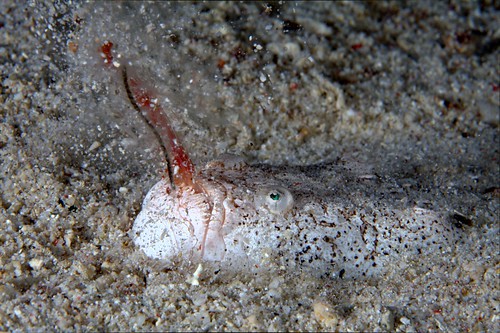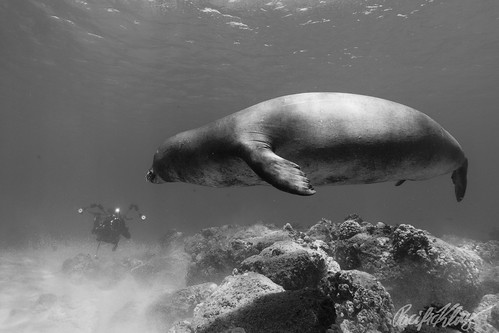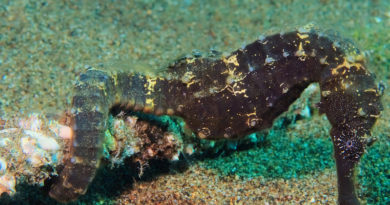The Wow Factor in Underwater Photography
I recently had the opportunity to serve as a judge in an underwater photo competition. That was great fun – the other judges were cool, and I got to look at a number of absolutely amazing photographs. The competition was run by the Department of Tourism of the Philippines, and held in Dauin and Zamboanguita on Negros Island in the Philippines. The judging happened at Silver Reef Resort in Dauin (thanks for the browny & vanilla ice cream!).
How did I go about the judging? I think my criteria were probably fairly similar to those of the other judges in this competition, as evidenced by the fact that the photos which I liked usually placed highly; Hence we had a pretty good agreement on what is a top shot and what is not.
So let me explain how I scored the images we were looking at: At first it is worth pointing out that an underwater photo contest is an art contest (despite all the technology involved), and there will always be a subjective element. Nevertheless, the basic criteria for a good photography are well established: Exposure must be spot on, and composition needs to be good. There are countless photography resources which explain how to get that right. In addition, in underwater photography you’d want to have minimal or no backscatter. Again, you can achieve this with proper strobe placement, and there are many YouTube videos and blogs which explain how to get that right.
The story is, though, that at least 1/3rd of the images we looked at in the recent photo contest were spot on according to these criteria. Well exposed, composed, no backscatter. They were all top photographs, all worthy of being printed in a large format.
Here comes the Wow Factor
What then sets some well exposed, well composed images apart from others is the “Wow Factor“. You look at a photograph, and go “Wow!“. The instant sense of amazement they caused is what often set the winning images apart.
Generally, the wow factor is a pretty subjective effect. What wows one judge might not impress another so much. As you might know, I love gobies, and am more easily wowed by a good goby shot. But on average, I believe a few ways can wow. And these are:
Photograph an Animal DOING something unusual
The shot above won a photo contest a few years ago. I am using my own images to explain the wow effect not because I am convinced that I am Neptune’s gift to underwater photography, but because I own the rights to my own images! A stargazer is a cool fish, and I don’t see it that often. BUT photographing a stargazer which flicks out is tongue to hunt is extra special. Similarly, an image won at the contest I was judging which showed a small squid catch a shrimp. That shot definitely made me go woooooow.
Photograph Something in an Unusual Way
Another way to wow is to shoot someone (diver or fish) in a way which hasn’t been done all that often. Yes, I know I’m not the first one to shoot an over-under of a freediver. But it’s still much less common that conventional underwater shots, hence I am using it as an example here. So, use innovative photographic techniques like over-under, wide-angle close focus, creative back-lighting, and so on. This will set your shot apart from many other very well done, but more conventional photographs.
Shoot An Unusual Animal
One way to wow an audience is to shoot an animal which even widely traveled scuba divers don’t see very often. Below is a shot of the rare and endangered Hawaiian monk seal. The image ended up in a magazine. A caveat is necessary here: A mediocre, ill-composed shot of a super-rare fish or nudibranch might be interesting for a biologist as a proof of occurrence of that animal in the location where it was shot, but it ain’t going to win a photo contest. The rare seal or frogfish or nudi can only serve as a wow-enhancer, not as a substitute for basic photographic quality.
How to Wow
There is no easy way to wow. You have to dive a lot to increase your chances, always have your camera ready to fire, pay attention to the environment, bring good spotters, study natural history to be able to predict where to find unusual critters and behaviors, and of course be lucky. Good luck!
A Few More Comments
Wildlife manipulation is bad – any image where judges suspect that an animal was placed by the photographer will suffer a points deduction in most photo contests these days.
Also: In a good photo contest the judging is anonymous. We scored “entry 1” not “Entry by Joe Schmoe who always buys me beers”.
Check out this playlist with photo tips and tricks:




